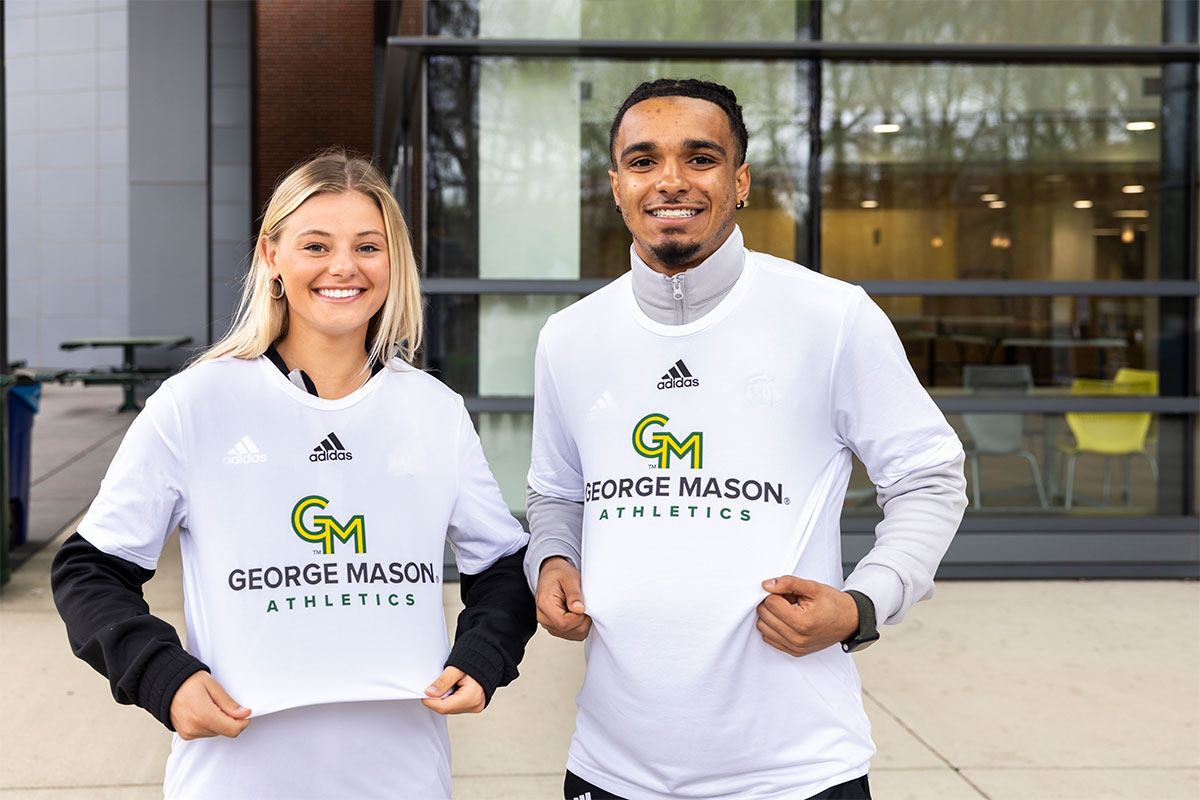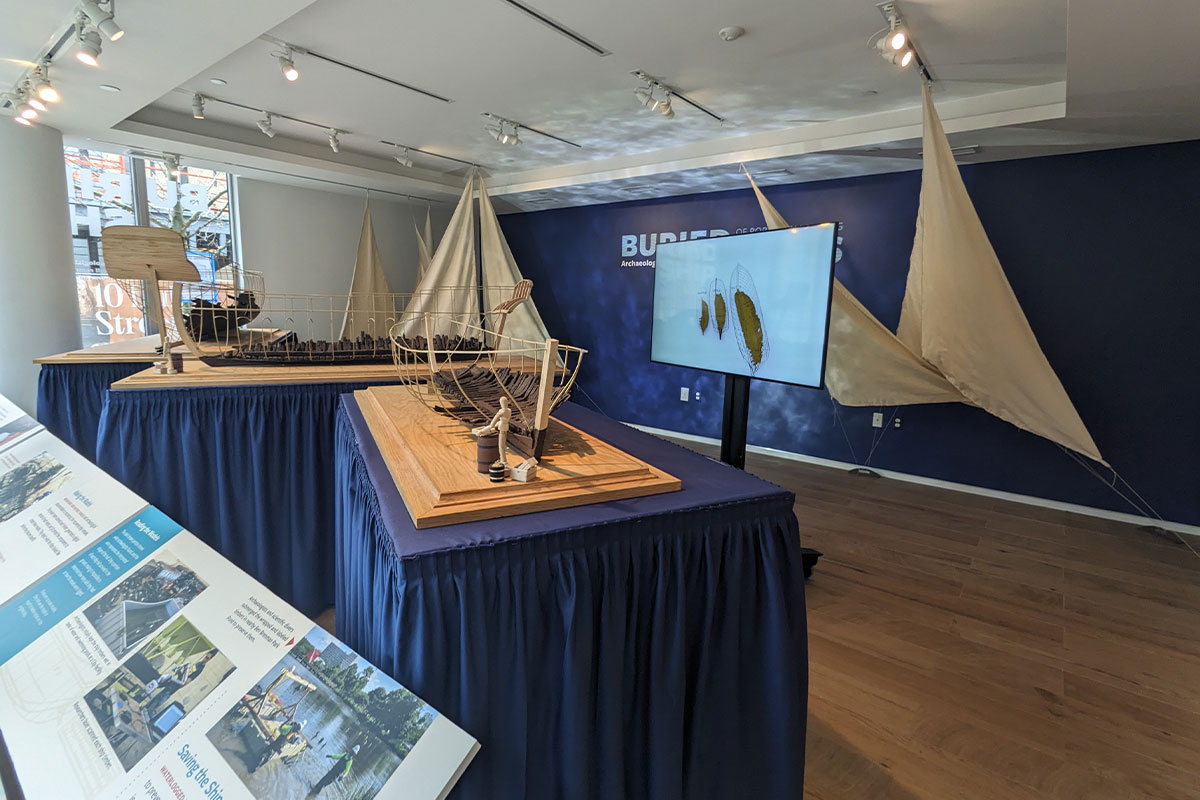The University of Virginia and Virginia Tech are two institutions close to the hearts of the many alumni, parents, students, or student hopefuls in our region. Northern Virginia Magazine takes a look at their history as both rivals and partners, and shows you how they stack up.
A house divided can indeed stand, and Eileen Pearsall has a yard flag to prove it. “It has the Virginia Tech logo on one half and the UVA logo on the other,” says the Leesburg mother of four.
The flag represents unity for a family equally loyal to the University of Virginia and Virginia Tech.
“My husband, Nels, graduated from Virginia Tech, so our kids grew up wearing Hokies shirts and visiting the campus so often they knew it like the back of their hand,” says Pearsall. “But two of our kids chose to go to college at UVA, while the other two chose Virginia Tech.”
Every year around Thanksgiving, the entire Pearsall clan dons their respective team jerseys and heads to the rival football game. “It’s like Christmas morning for us and brings the whole family together,” says Pearsall. “The kids pretend to battle it out with each other, but when I see all those young Wahoos and Hokies in the stadium, I know that it won’t be long before they become peers in the workforce.”
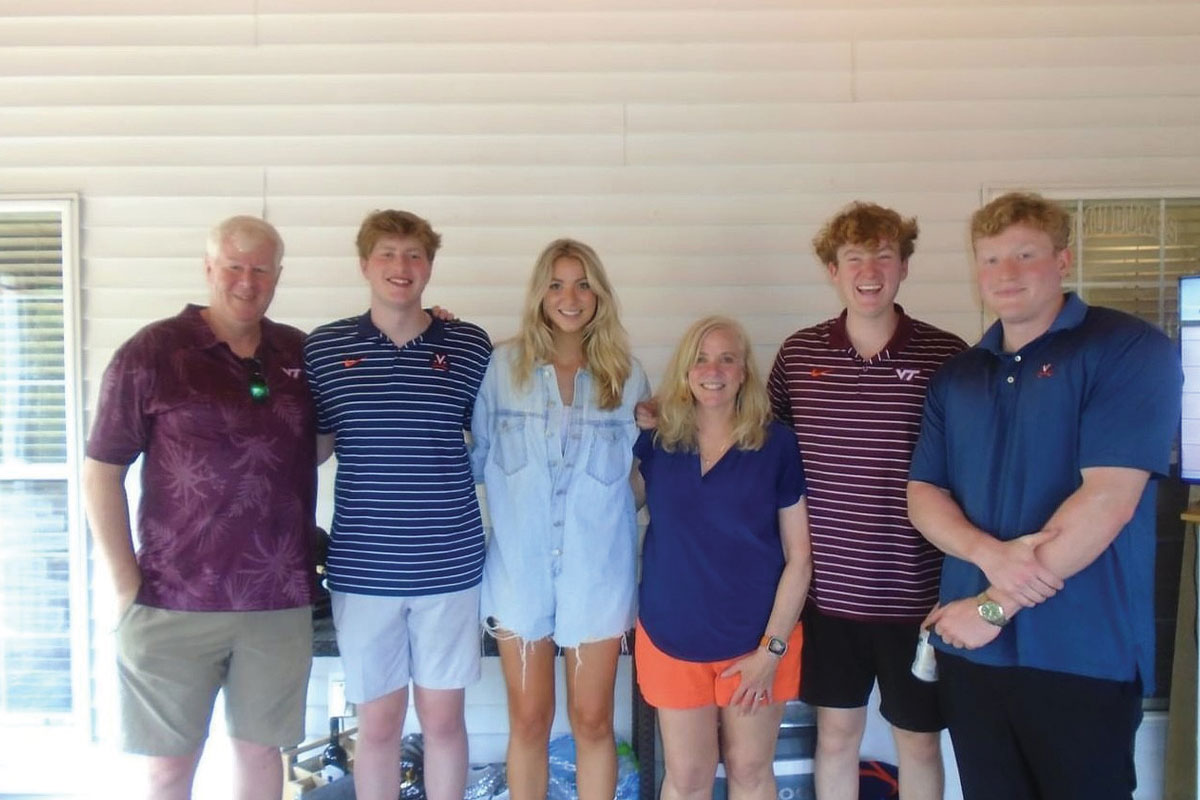
Two Universities, One Mission
Friendly rivalry between UVA and Virginia Tech runs as deep as the Blue Ridge Mountains near the Charlottesville and Blacksburg campuses. Set about 150 miles apart, each university brings history, character, and traditions to the table. As sibling universities, they also have a common goal of giving students the knowledge and resources to find solutions and make an impact worldwide.
Thomas Jefferson founded UVA in 1819 to “advance human knowledge, educate leaders, and cultivate an informed citizenry.” About 17,300 undergraduate and 8,700 graduate students attend UVA. Most noted for its medicine, law, and nursing schools, UVA offers more than 120 majors across 12 schools.
Virginia Tech first opened in 1872 as a land-grant college. Following its motto, Ut Prosim (“That I May Serve”), Virginia Tech takes a hands-on approach to preparing students to be leaders and problem solvers. As a research institution that integrates technology into all disciplines, it offers about 280 undergraduate and graduate degree programs to more than 37,000 undergraduate, graduate, and professional students.
What you may not realize is that UVA and Virginia Tech have a fruitful history of scholarly collaboration. Combining the best in resources and talent, students and faculty from both schools often work elbow-to-elbow on modern challenges that result in outcomes they could not achieve without each other.
“As public institutions, UVA and Virginia Tech have an important responsibility to educate citizen leaders and to develop and disseminate new knowledge that will benefit our commonwealth, our country, and our world,” says Bethanie Glover, deputy spokeswoman for UVA. “There are many cases where those goals are better accomplished by combining the resources and expertise of our schools and our outstanding faculty, staff, and students.”
Two examples of these cross-university collaborations are the Commonwealth Cyber Initiative and the integrated Translational Health Research Institute of Virginia.
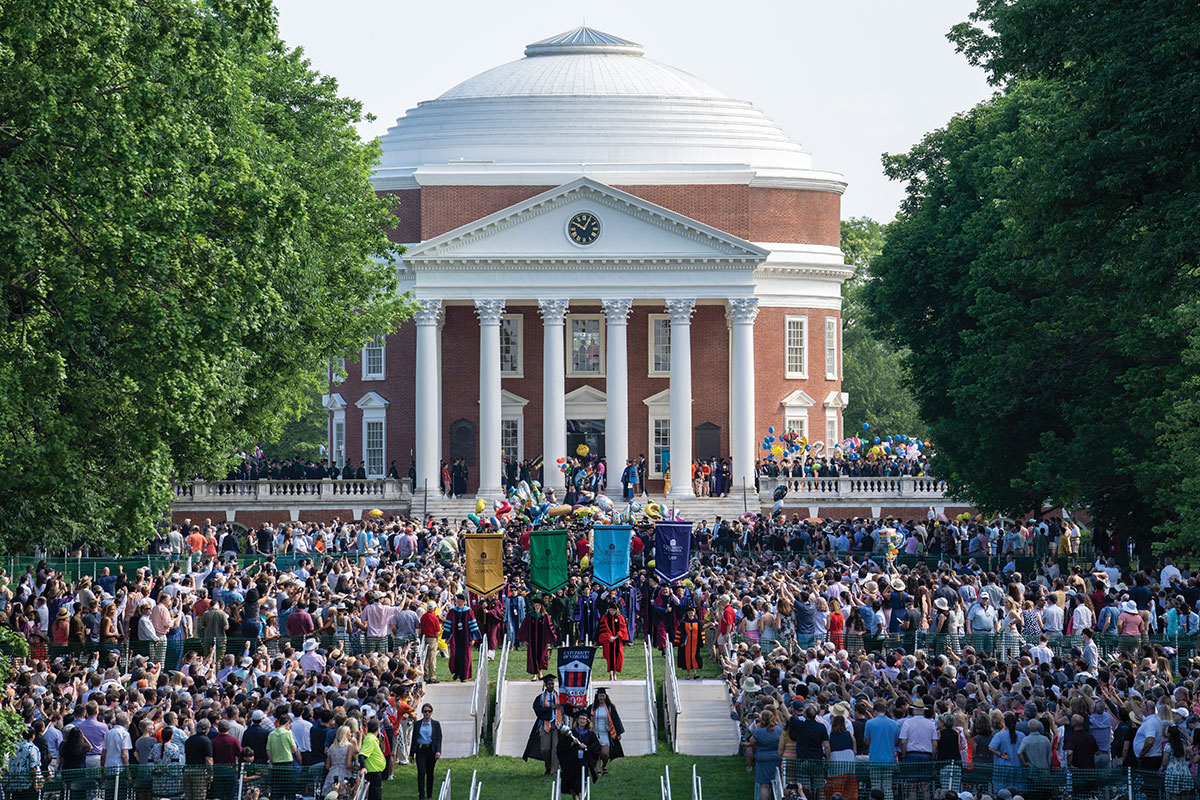
Leading the Way on Cybersecurity
In 2018, the Virginia General Assembly tasked Virginia Tech with creating the blueprint for development and operation of the CCI. The goal: make Virginia a recognized global leader in cybersecurity through innovation, workforce development, and research. The result is a statewide network that engages 41 Virginia higher education institutions, industry, and government, along with nongovernmental and economic development organizations.
The network consists of four regional nodes, each hosted by a higher education institution, with the coordinating hub at Virginia Tech’s Research Center in Arlington. “In short, we are stronger together,” says Luiz DaSilva, CCI executive director and Virginia Tech’s Bradley Professor of Cybersecurity, who leads the effort. “Building lasting collaborations is one of the most important contributions that CCI is making and is a key driver of our success. Big challenges we face today, like cybersecurity threats or the fast development of artificial intelligence, do not respect state or national borders, so effectively addressing the challenges requires joining forces and building nationwide and international partnerships.”
The universities share research infrastructure for what DaSilva says are huge efficiencies. “Students can access resources at multiple universities that they might not have at their home institution.
“Virginia has a booming tech sector, extremely strong universities, and a unique government presence. Northern Virginia, with its proximity to DC, has particularly pressing cybersecurity needs related to federal agencies and the entire ecosystem that supports it. CCI is well positioned to spark the innovation ecosystem in this region and contribute to closing the workforce gap in cybersecurity.”
UVA plays an important role in the network. Led by UVA computer science professor Jack Davidson, the Virginia Cyber Navigator program places students from six Virginia universities in summer internships with registrars’ offices “to work on strengthening the security of our elections,” DaSilva says.
The collaboration benefits every Virginian. An economic impact study commissioned two years ago found CCI helped create 1,085 jobs and $80 million in labor income and added $208 million to the Virginia gross domestic product.
Taking on Health Care
A federally funded collaboration, known as iTHRIV, involves UVA, Virginia Tech, Carilion Clinic, Inova Health System, the Center for Open Science, and the UVA Licensing & Ventures Group. Together, they leverage data science to accelerate innovation in health-related research and facilitate team science. The goal: improve health and promote health equity.
In 2019, iTHRIV received a nearly $23 million, five-year grant to advance innovative ideas from the point of discovery to implementation. “By leveraging the strengths of multiple institutions, we aim to advance biomedical research and education, improve health and health care, and contribute to economic development in the state,” says Michael Friedlander, Virginia Tech’s vice president for Health Sciences and Technology and executive director of the Fralin Biomedical Research Institute at VTC. “These institutions have harnessed the power of collaboration to tackle complex challenges that no one university could solve alone.”
Virginia Tech and UVA engineers worked with surgeons, Carilion Clinic residents, and Fralin Biomedical Research Institute researchers to “develop an intelligent virtual coach, using eye-tracking technology and machine-learning tools, to help surgeons and surgeons-in-training develop and refine their skills in laparoscopic procedures,” he says. Friedlander says the marriage of science, engineering, and medicine improves patient outcomes, reduces operating room time, and brings “the newest and most powerful techniques to patients more quickly.”
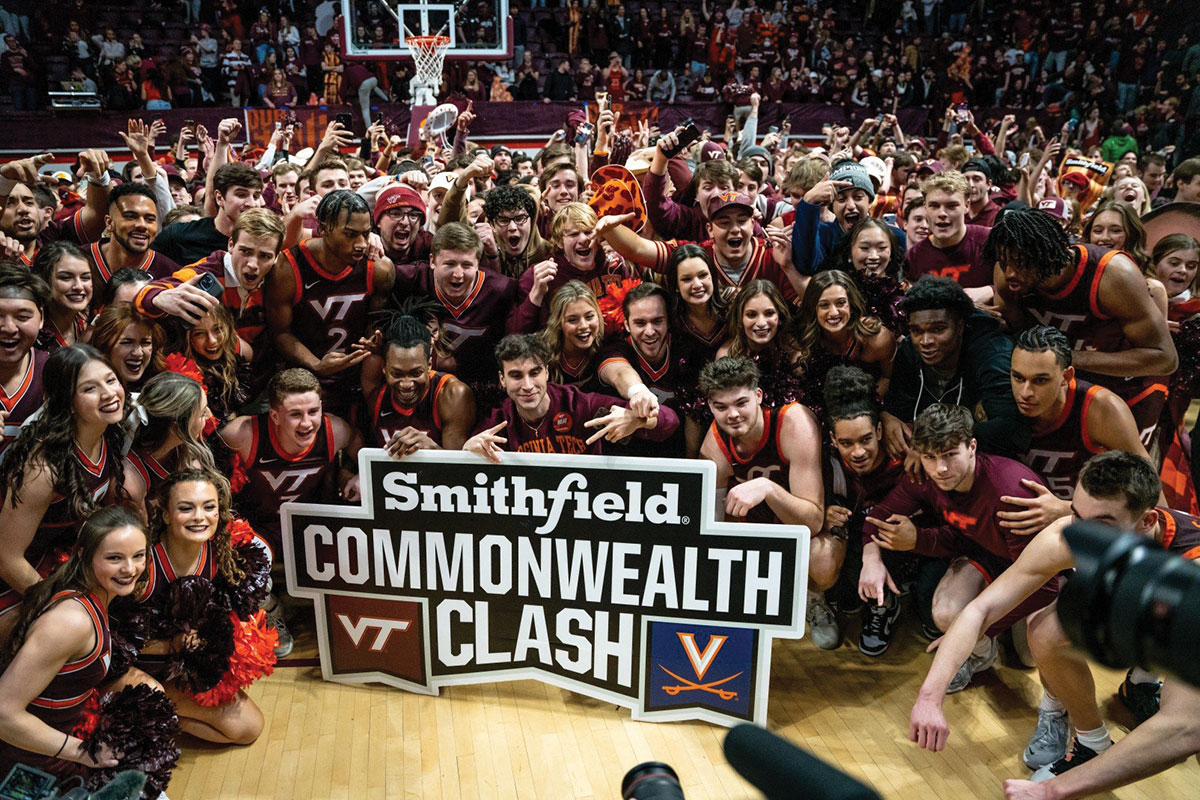
Ties That Bind
As teamwork between UVA and Virginia Tech continues to grow, it’s more common to see divided spirit flags like the one in the Pearsalls’ yard. Pearsall made hotel reservations for this year’s UVA–Tech football game months ago. Now, she is looking for someone to sew divided jerseys for her two yellow Labs.
“When you live in Virginia a long time, you get to know a lot of people who have ties to both UVA and Virginia Tech,” says Pearsall. “It’s truly a big family affair that goes way beyond the students. There are so many local generations of graduates who now have children or grandchildren going to school in Virginia, so the crossover of loyalties is very common.”
Feature image of the Commonwealth Cyber Initiative courtesy Virginia Tech
RELATED STORIES:
- For UVA and Virginia Tech, Friendly Rivalry Is the Name of the Game
- UVA Stays Ahead of the Curve with its NoVA Presence
- How Virginia Tech Aims to Drive Innovation with its NoVA Campus
- Interns’ Guide to Campus Life at UVA and Virginia Tech
- UVA and Virginia Tech’s Presidents Share Their Thoughts on Challenges and the Future
- Explore Charlottesville, the Charming Area Surrounding UVA
- Discover the Beauty of Blacksburg, Virginia Tech’s College Town
This story originally ran in our August issue. For more stories like this, subscribe to Northern Virginia Magazine.



